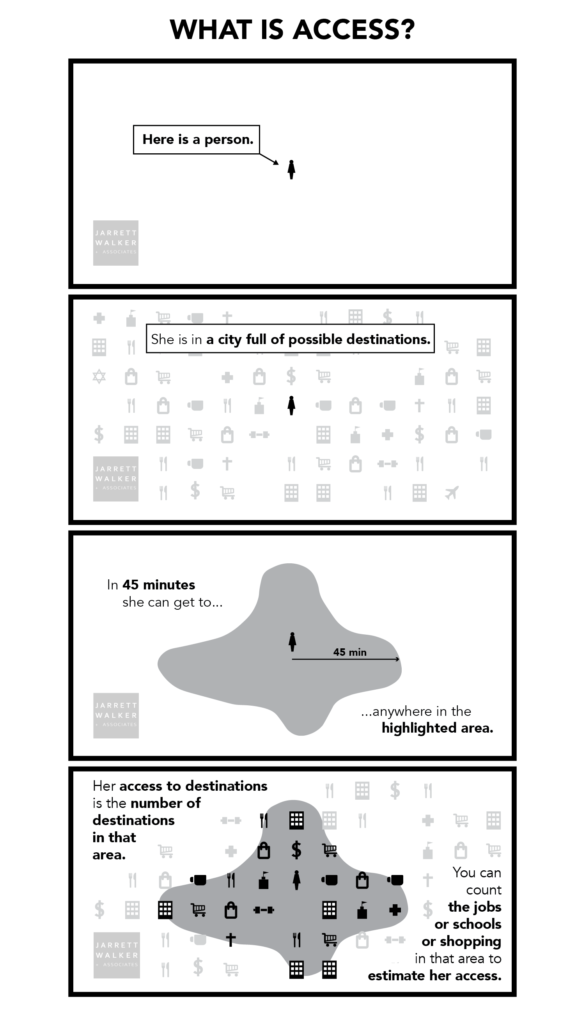One of Streets Alive Yarra’s values is a commitment to equity and social justice. All of our policy proposals and street designs are based on this value, including our proposals to reform how on-street parking is priced. Examples of our reform proposals can be seen on our better for parking page, including:
- Converting free, time-limited parking bays to paid bays
- Selling a limited number of “user pays” parking permits
- Increasing the price for annual permits
As we speak with residents, ratepayers and stakeholders from throughout Yarra, we receive feedback on some issues. One item of feedback is the feeling that council should not sell unsubsidised “user pays” parking permits because it would create issues of social justice. For context, “user pays” parking permits are already being sold by the City of Moreland, and exempt the holder from timed parking restrictions in a specific street.
In the City of Moreland such permits are available for $3,500 per year, and detractors claim that they are out of reach to people on low incomes. In effect, the outcome would be that a privileged group of high-income people would have access to public land, to the detriment of people on low incomes. Thus, the policy would not deliver equity or social justice. We disagree, and here’s why.
We understand the feedback to be concerned with:
equity of access to on-street parking;
whereas we believe it is better to be concerned with:
equity of access.
For the term “access” we mean the definition from Jarrett Walker:
access is your ability to go places so that you can do things.

Streets Alive Yarra believes that access can be further defined as:
ability to go to any property in Yarra, without being exposed to hazards that carry the risk of death or serious injury, irrespective of whether one chooses to walk, cycle, use public transport, or drive.
Hazards and risks can be assessed and quantified using the framework of Safe System, the core of Australia’s and Victoria’s road safety strategies. The Safe System framework assesses risks based on the kinetic energy of high-mass objects such as motor vehicles. If kinetic energy isn’t appropriately managed, it can lead to collisions that cause death or serious injury.
At the moment, people who drive have good access, because it’s reasonably safe to drive and park, considering that most roads and streets are limited to a speed of 40 km/h. When assessed using Safe System, even on streets with a speed limit of 60 km/h, e.g. Hoddle Street, cars provide enough protection to occupants so that if a collision occurs, the person is protected from death or serious injury.
The same claim (people who drive have good access) cannot be said for people walking or cycling, because many streets offer an environment with hazards that carry the risk of death or serious injury. For example, many streets have footpaths that are non-existent, obstructed, too narrow, or too sloping to be used safely, thus forcing people to walk on the street. Also, many crossings occur on streets that have a speed limit greater than 30 km/h, and the crossings themselves are uncontrolled (i.e. no signalised lights to cross). Similarly, for people cycling, most streets have a speed limit greater than 30 km/h, and lack protected bicycle lanes. When assessed using the framework of Safe System, such streets do not offer a safe environment for people to walk or cycle in.
Thus, Yarra’s streets fail to deliver access to cohorts of people who can’t drive or can’t afford to drive, such as children, youth, people low incomes, people who are too old to drive, and some people with disabilities. At present, these cohorts are denied safe access, the ability to go places, and social justice.
Solving these infrastructure issues requires funding, such as selling “user pays” parking permits, as the City of Moreland does, or selling a limited number of “C1” parking permits, which allow the holder (e.g. a councillor) to park in most permit zones or time limited zones in the City of Yarra. Such permits would have an even higher value than the “user pays” permits from the City of Moreland, because they aren’t limited to a specific street. To prevent resale or transfer, the permits should be linked to a number plate of a single vehicle. To deliver the maximum revenue for ratepayers from the sale of a limited number of permits, the sale process could occur by “sealed bid” (or Vickrey) auction; if 1,000 permits were offered for sale, council would receive a private bid from each applicant, nominating the price they are willing to pay. The bids are ranked from highest to lowest, and the sale price for all successful applicants is fixed at the level of the 1,000th bid.

If implemented, this would increase the number of parking permits in Yarra by ~ 3%, from ~ 30,000 to 31,000. If the sale price was in the range of $3,000 to $5,000 each, the benefit would be a revenue each year of $3-5 million, hypothecated for infrastructure for walking and cycling. This would deliver a highly attractive benefit/cost ratio.
The outcome would be an insignificant decrease in the
equity of access to on-street parking,
but a significant increase in overall
equity of access.
If implemented, this would be a good outcome, one that delivers equity and social justice. We call upon all stakeholders in Yarra, including residents, ratepayers, visitors, Officers, and Councillors, to support equity and social justice, and to support proposals for the City of Yarra to sell a limited number of “user pays” or “C1” parking permits to fund infrastructure to improve walking and cycling.
Published 29th March 2021
